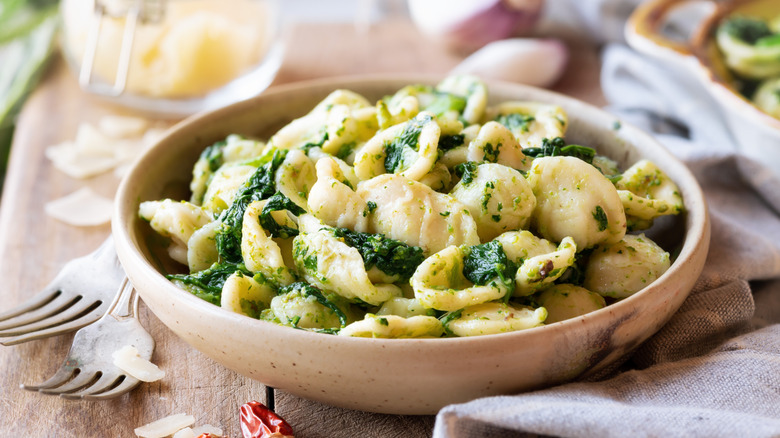The Major Difference Between Dining In Europe Vs The US That Seems Bizarre To Americans
Europe has long exerted a strong pull on Americans, and for good reason. The storied continent across the Atlantic offers endless opportunities to wander its cobblestone streets, spelunk its heritage-rich museums, relax in its idyllic countryside, and soak up old-world vibes like in this underrated Italian city that boasts awe-inspiring historical sites. Europe offers many deep and unique charms, so it's no wonder Americans are heading there in record numbers.
Americans also flock to Europe to dive into its extraordinary cuisine. From Parisian bistros to tapas bars in Madrid to hole-in-the-wall pizzerias in Naples, Europe offers a range of tastes and culinary adventures that are fundamental to any trip to there.
That said, sitting down for a meal in the U.S. vs. one in Europe can be very dissimilar experiences. For example, there are distinct differences between American and European steaks that may surprise some people, along with other culinary customs and quirks, like this simple dining etiquette rule in Italy. However, one thing that will immediately stand out to most any American is portion size. Unlike in the States, bigger doesn't necessarily mean better in Europe, and for some Americans that may take some getting used to.
In Europe, less is more
American restaurants are notorious for their massive portions, delivering plates stacked with so much food that you may not even be able to finish it all in one sitting. The portion sizes in the U.S. are often so gargantuan that customers take the leftovers home in to-go boxes ("doggy bags" for old-school eateries). American diners often expect to be filled to the gills when they go out to eat, which means that they can be in for a rude awakening when they sit down at a restaurant across the pond.
In Europe, the portions are usually much more moderate, even considered small by American standards. Most Europeans are used to eating less during a sitting, which may help explain their lower obesity rates when compared to the U.S. In Europe, an emphasis is placed on flavor and quality rather than quantity. Restaurants often take pride in using fresh, locally-sourced ingredients that are meant to be savored. This enriches the dining experience, and even though you may have a bit of extra room for dessert after that plate of pasta in Rome, you'll be better for it.
While Europeans generally take down less food during a meal than their American counterparts, they also eat much more slowly, lingering for sometimes up to three hours at the table. In the States, the server often plops the check down as soon as the food is finished, whereas in most European countries, the table is yours until you call for the bill. You'll rarely be rushed, so don't be afraid to park for a long while and slowly sip your wine or coffee while the evening fades away.
Other differences to be aware of
In addition to giant portion sizes, in the U.S., tipping culture reigns supreme. This isn't as much of a thing in Europe, as servers are paid a living wage. Rounding up the bill and leaving some change on the table will certainly be appreciated, though at more formal places, 5% to 10% may be expected (if it's not automatically added to the bill as a service charge). An American-style tip (15% to 20%) isn't appropriate anywhere in Europe, and leaving one is "unnecessary, if not culturally ignorant," according to travel guru Rick Steves.
Also, unlike in the U.S., water is rarely included with your meal, so don't be afraid to shell out a couple of extra euros for the luxury. And if you order a soft drink, don't expect a full glass of ice like you'd get in the States. You may end up with a couple of cubes if you're lucky, since most Europeans prefer their soft drinks room temperature or slightly chilled.
Outdoor dining is also much more prevalent in Europe than it is in the U.S. While dining "al fresco" is a great, romantic way to really relish your surroundings (as well as your meal), you may end up paying more for the privilege, and don't be surprised if someone at the table next to you lights up a cigarette, as it's still pretty common for people to enjoy a smoke with their meal outdoors in much of Europe. And if you really want to stay on the locals' good side, make sure to avoid these rude requests when dining at a restaurant in Italy.


